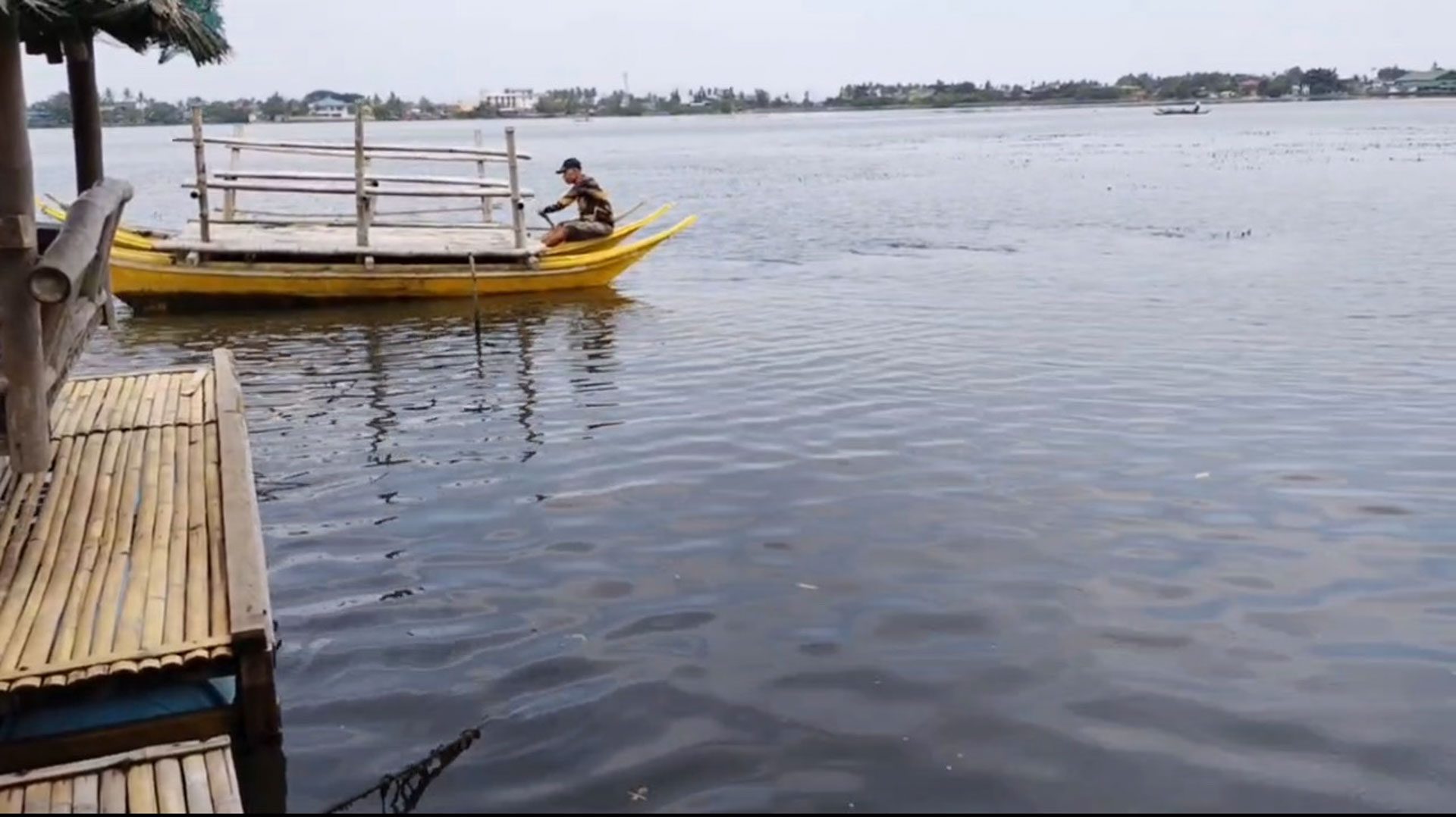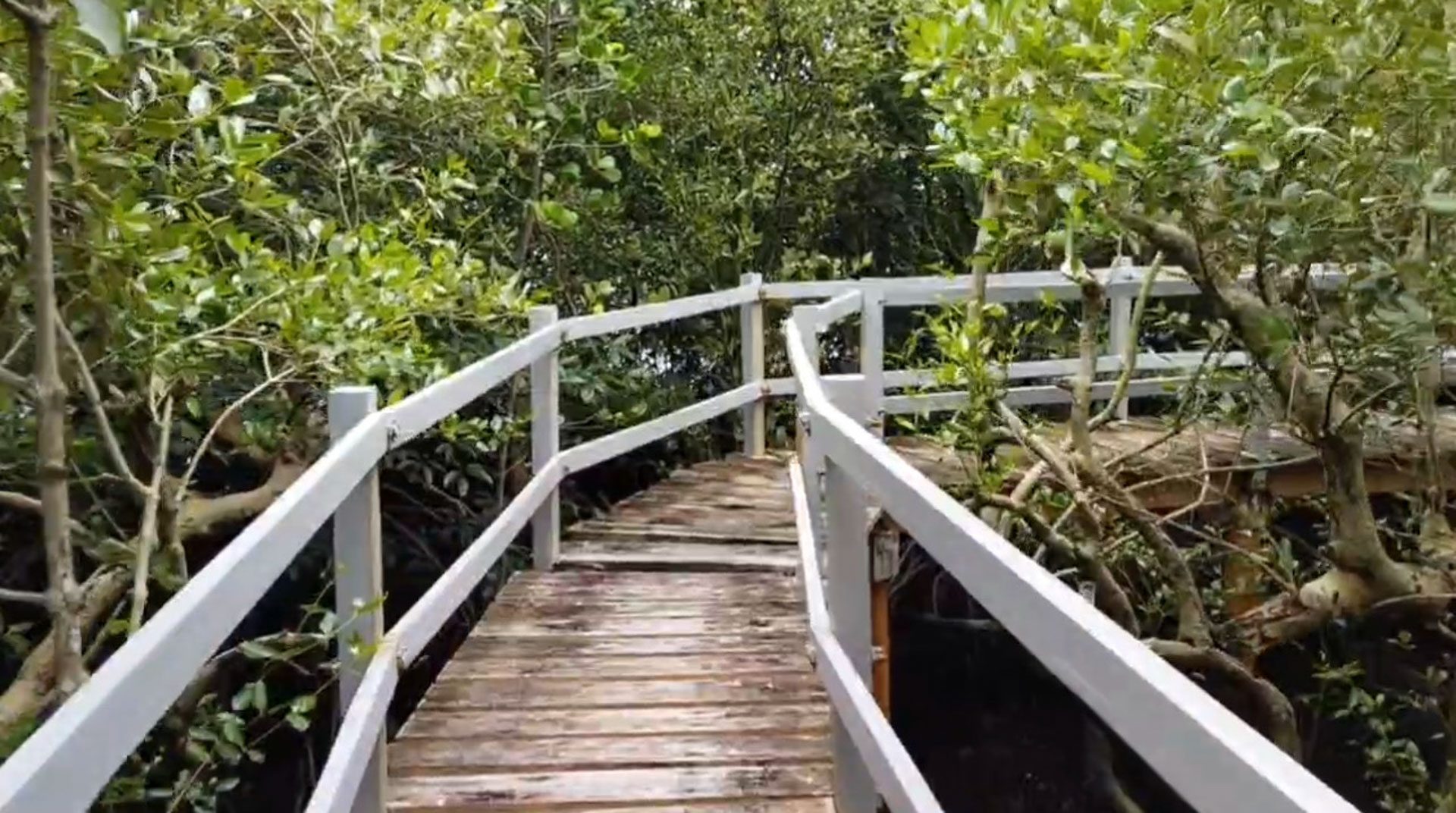SUMMARY
This is AI generated summarization, which may have errors. For context, always refer to the full article.

TACLOBAN CITY, Philippines – Carlos Singh spends dawn, weather permitting, laying out his catch from Cancabato Bay at the small public market of San Jose, a district of Tacloban City.
The 56-year-old resident of Barangay Paraiso told Rappler on Wednesday, May 24, the bay is his family’s main source of food and income.
But Singh and an estimated 2,000 fisher folks depending on the bay’s bounty fear displacement once the Department of Public Works and Highway (DPWH) starts construction of the city’s P3.46-billion causeway.
The DPWH claims the four-lane, 2.55-kilometer road embankment, with a 188-meter bridge, will protect the city from storm surges like the one that killed thousands in Tacloban and other Leyte province during supertyphoon Yolanda in 2013.
The agency also sees the causeway as an alternate route from the airport to the city center.
Fisherfolk opposing the project said they were never consulted.
They scored a hit on Thursday, May 25 when the city council approved a resolution by the committee on the environment to put on hold the causeway and reclamation projects.
The city council asked the DPWH to first address residents’ concerns on livelihood and the environment.
Project rationale
Tacloban Councilor Aimee Grafil, chair of the environment committee, told Rappler that councilors believe the project lacks environmental study.
The council will furnish the DPWH with a copy of the resolution on Monday, May 29, she said.
The causeway project gets its rationale from Tacloban’s Comprehensive Land Use Plan 2017-2025.
Its main claim: The bay has a “ dying” marine biodiversity because of siltation and pollution.
This claim underlies an infrastructure program that also includes dumping land on 400 hectares of water for a new central business district.
If the city planners have their way, only 162.26 hectares of the bay will be left for fisherfolk – that is if any marine life survives the ravages of reclamation activities.
In several interviews with Rappler, those opposing the causeway project disputed the city’s claim.
‘Cancabato Bay is alive’
“Cancabato Bay is not lifeless. It is one of the most important fishing grounds in the region,” City agriculturist Romelo Anade Anade told Rappler on Tuesday, May 23.
Cancabato Bay is a protected Mariculture Park. The bay yields products like fish, crabs, prawns, sea shells, and other marine resources.
The area, Anade said added, is “a breeding ground for all these marine species.”
He called the causeway “really bad news for fisher folks.”
“If the waters of the bay are confined and contaminated, there is a very high possibility that the marine resources of Cancabato Bay will die,” Anade warned.
There are 3,649 registered fisher folk in the affected San Jose district.
Anade said the Causeway project would affect 50% to 60% of them.
Fishermen and traders alike fret about the potential huge loss of earnings.
“Dako ini nga kawara yan han amon pamilya. Dara hini nga project masasadhan an Cancabato Bay ngan kinahanglan na kami pumalawod, delikado ha amon ngan diri kakayahon han amon mga gudti nga sakayan pandagat,” Singh said.
(This is a huge loss for our families. Because of this project, Cancabato will be closed and we will be forced to navigate father with our small boats, putting us in danger as we have to access the open sea, with strong waves and currents.)
“Kun ig dayon an Causeway, baga la kami nira hin pinanilo, gin sakal na kami nira.” Singh added. ( If the project will push through, it was as if they had strangled us)

Jedee Magoncia, advocacy officer of Kankabatok Kolektib (KK) told Rappler that the group wrote to Tacloban City Vice Mayor Edwin Chua on May 9, to express opposition to the causeway project.
He echoed Grafil’s complaint about the lack of studies on the project’s impact.
Beyond earnings
Anade and environmentalist Roque Regis also warned of the grave danger the infrastructure project represents to human lives.
Regis, the 58-year-old president of Paraiso Mangrove Eco Learning Park Marine and Wildlife Sanctuary in San Jose, said the causeway would destroy their fully restored Meyape mangrove trees.
Barangay Paraiso’s thick mangrove forest saved the lives of residents from the 20-ft storm surge as supertyphoon Yolanda lashed at the Visayas in November 2013, he pointed out.
In contrast, many people died in other areas of the San Jose district, the worst hit in Tacloban.
“Mangrove forests are our protection from typhoons and valuable to preserving marine life, which now thrives in Cancabato,” Regis told Rappler.
“Dinhi na ako nalagas. Waray man kami gutuma dinhi, naka kakuha kami hin isda, pasayan, mga masag hin Libre para hiton amon pag kaon,” Regis said.
(We have grown old with the mangroves here. We never go hungry; we can get fish, shrimp and crabs free for our food.)

Anade said both the causeway and mangrove can prevent storm surges.
However, mangrove produces blue carbon that can neutralize hot temperature.
Mangrove forests can also help decrease the height of waves during storms, helping protect coastal communities, he added.
They are likewise vital for biodiversity as they serve as fish sanctuaries and pollution filters.
‘We are supporting the call of our fisher folks against the causeway project.’ Anade told Rappler.
‘We are not anti-development, we can always go for any projects, as long as these do not negatively impact humans and their livelihood, and the environment,” he said. – Rappler.com
Add a comment
How does this make you feel?












There are no comments yet. Add your comment to start the conversation.